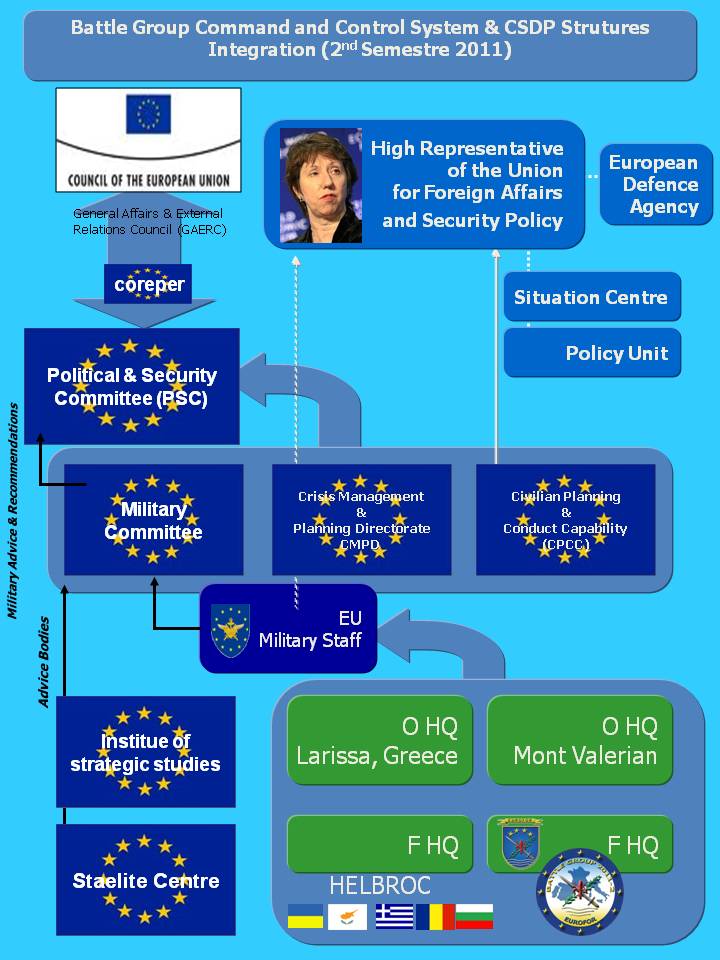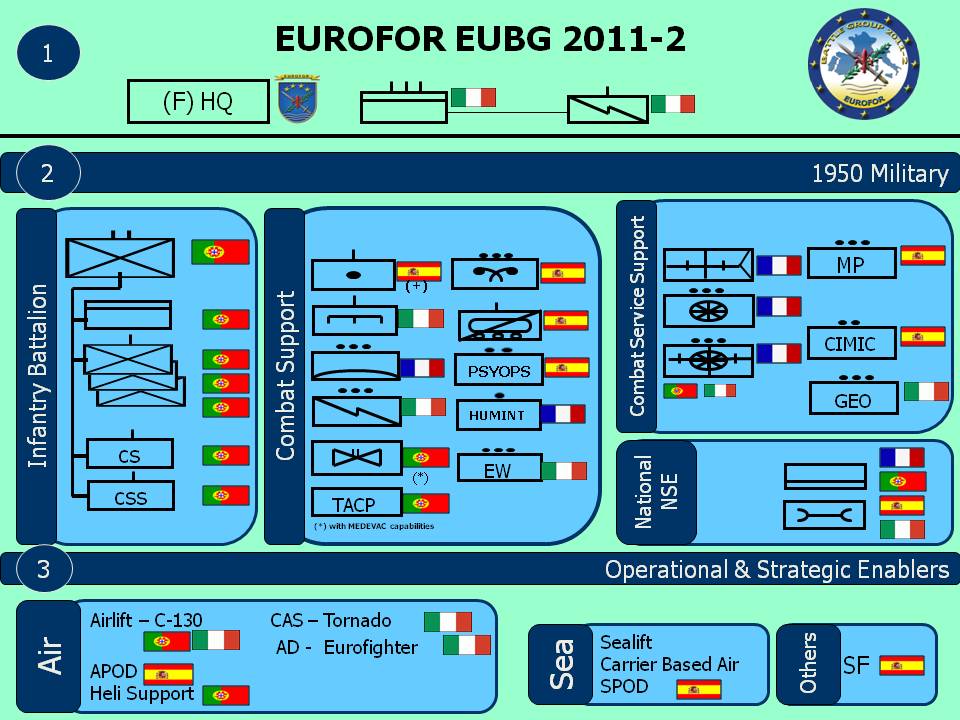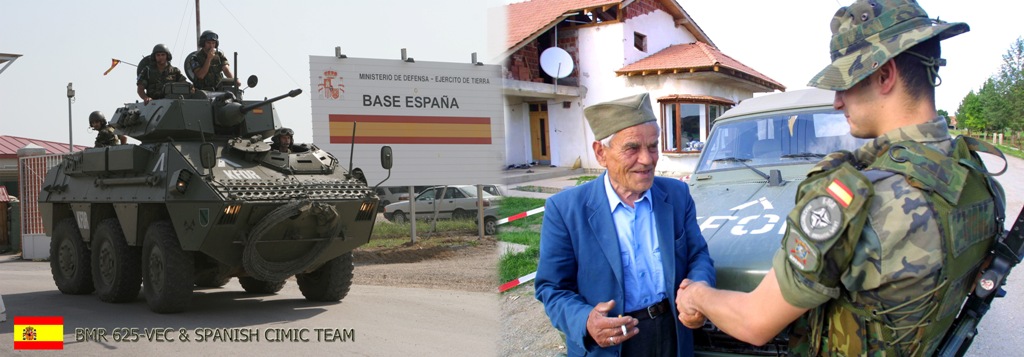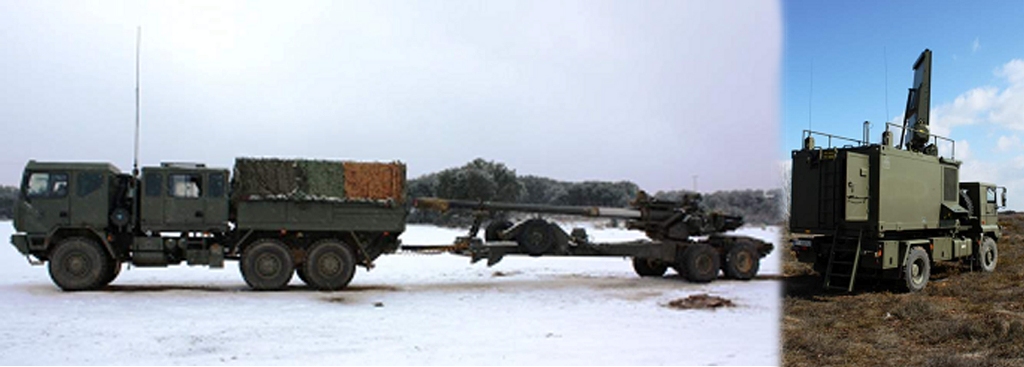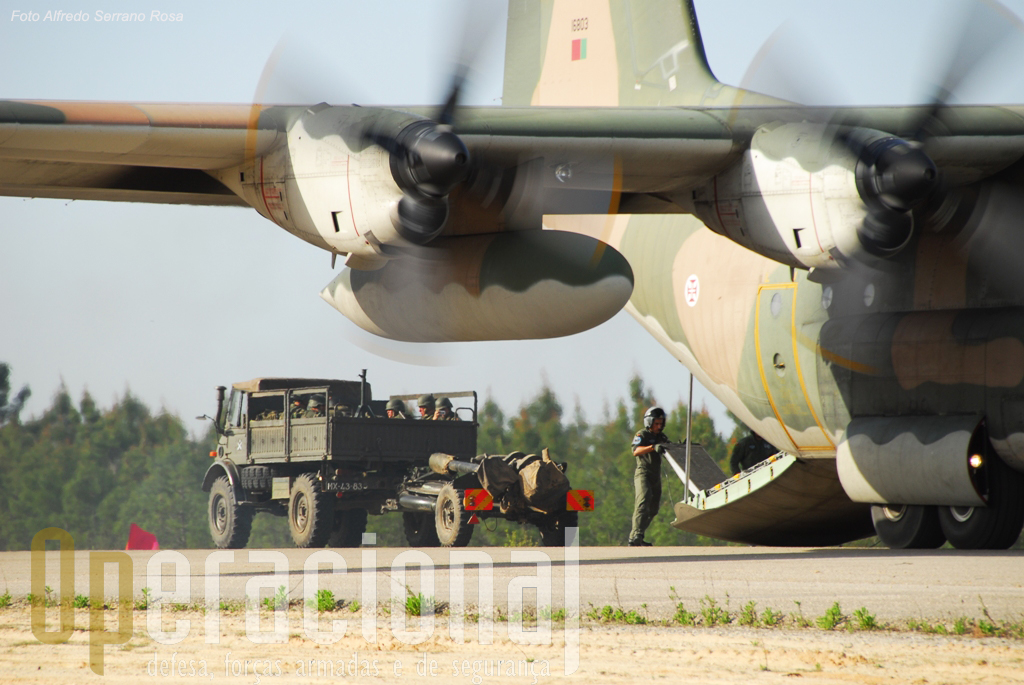A EUROFOR assume no próximo ano o comando de um Battlegroup da União Europeia, conhecido pela sigla EUROFOR EU BG 201-2, no qual Portugal tem uma importante participação. Não só porque se comprometeu em fornecer forças e meios em número significativo como porque lhe caberá seu comando.
Neste artigo que hoje publicamos, Nuno Manuel Monteiro Fernandes, Tenente-Coronel de Artilharia, 47 anos de idade e 29 anos de serviço, Chefe da Secção de Planos do QG da EUROFOR em Florença – Itália, acumulando com as funções de Ponto de Contacto para o Battlegroup, escreve sobre este assunto com o qual lida diariamente.
Nuno Fernandes depois de terminar a Academia Militar prestou serviço em diversas unidades de artilharia ao longo da sua carreira, tendo comandando em 2003 o Grupo de Artilharia de Campanha do Regimento de Artilharia n.º 4 e possui vários cursos de que se destaca o Curso de Estado Maior do Instituto de Altos Estudos Militares. Durante o ano de 2007 foi Comandante do Contingente Nacional na missão da EUFOR – Bósnia Herzegovina e em 2008 iniciou o seu trabalho actual na EUROFOR.
O “Operacional” orgulha-se de ter recebido este contributo de Nuno Fernandes. Julgamos que pelo modo como está apresentado e ilustrado, muito poderá esclarecer os nossos leitores sobre aquilo que é o EUROFOR EU BG 2011-2 e a importância do contributo português.
Command, Organization & Capacities of EUROFOR EU BG 2011-2
When the EUROFOR Battle Group (BG) will be on stand by after the 1st of July 2011 the chain of command will be fully integrated within the European Union Command and Control Command system. In fact, during the following six months EUROFOR BG and the HELBROC BG, will be ready to deploy on behalf of European Union on a short notice (5-10 days) to carry out the following missions: Separation of Parties by Force (SOPF); Stabilization, Reconstruction and Military Advice to third countries (SR); Conflict Prevention (CP); Non-combatant Evacuation Operations (NEO); and Assistance to Humanitarian (HA). Broadly, the European Union holds the capacity to deploy at the same time as an initial entry force (for each six months-period) a force composed of two BG and all the enablers.
Each BG is organized in diverse and specific ways according to the vision of the contributing States. Nevertheless, is important to look broadly into the organization of the EUROFOR BG in order to understand the solutions agreed among the EUROFOR states to raise the 1st multinational BG since the construction of the concept in 2004.
The EUROFOR BG is manly organized at 3 different levels, as shown on the next diagram: Deployable Force Headquarters its support unit, the BG core, the BG Combat Support, BG Combat Service Support, and Operational & Strategic Enablers. Let’s see each level at the time.
The Headquarters and its Headquarters Support unit
The international staff composes the Headquarters and the Headquarters Support Unit (HSU) is an Italian support unit regiment size. This regiment consists one Communication and Information Systems Company and a Combat service support Company. The HSU is ready to support the deployment, operation, and maintenance of a BG size Headquarters for a period of 30 days. This unit is equipped with all shorts of material namely tends, vehicles, containers, weapons, computers, servers, generators, teleconference assets, radios, dish antennas, lightening units, and other equipment in order to allow the staff to work 24 hours a day.
The Battle Group Core
The Portuguese Infantry Battalion composed of three rifles units, with reconnaissance and fire support capability. The battalion is based on wheeled 8×8 armoured personnel carrier Pandur II and 160 other vehicles. Besides, is equipped with the man-portable multi-role recoilless rifle Carl Gustaf, 84mm, and the portable medium range anti-tank missile MILAN and 120mm Mortars.
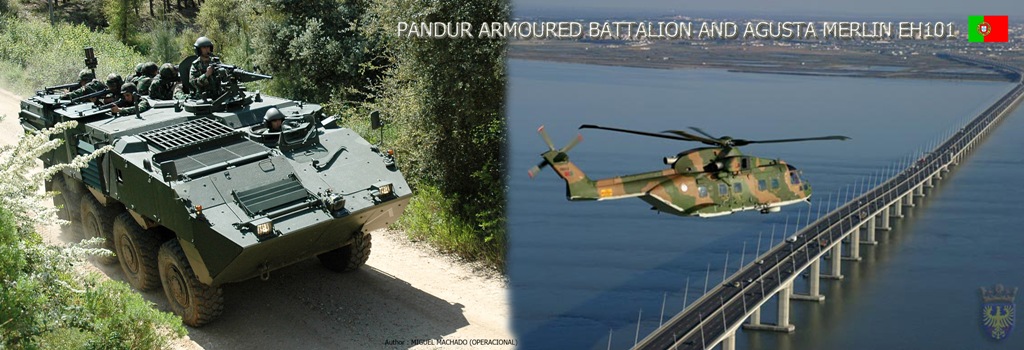 [4]
[4]
Combat Support
Portugal also provides the Agusta Westland AW101 Merlin as a medium-lift helicopter with MEDEVAC capacity. The Spanish field artillery unit based on 155mm calibre able to provide fire support and survey within the range of 40km – this unit is equipped with the artillery hunting radar (ARTHUR). The Spanish Reconnaissance unit is based on armored vehicles 6×6 BMR 625-VEC developed by Pegaso and the PSYOPS unit with production and dissemination capabilities. Spain also provides a CBRN unit able to deliver light decontamination assets. France will provide an air defense unit equipped with infrared homing surface-to-air missile Mistral (SAM) and radar assets together with an HUMINT unit.
Italy will contribute with a CIS unit able to provide Service support, system center and 2 networks, an Electronic Warfare (EW) Unit, and an Engineers Unit. The EW unit is bale to provide electronic support for communications and no communications, electronics attacks and electronics defense. The Engineers unit is able to deliver combat engineers, manoeuvre support, mobility, construction and EOD/IEDD capabilities.
Combat Service Support
France will contribute with Role 2 Light Manœuvre tailored to the mission, a Patient Evacuation Coordination Center, field ambulances and a transport unit with 30 vehicles.
Italy also contributes with a GEO unit, which is able to deliver production and analysis capability. Spain made also available a CIMIC unit and Military Police unit with marshalling, traffic Control and investigation capabilities.
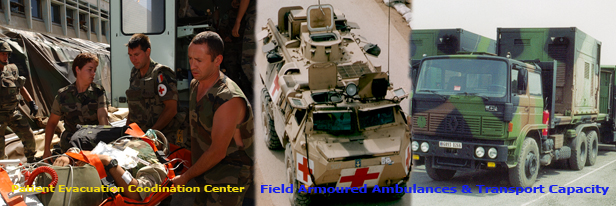
Operational & Strategic Enablers
Finally, the operational and strategic enables will be provided according to the needs of the deployment. Nevertheless, Portugal offered rotary wing support and cargo capacity based on the Lockheed four-engine turboprop Lockheed C-130 Hercules. Italy also made available the close air support capability (Tornado GR4 & Eurofighter) and Lockheed C-130 Hercules to reinforce the airlift capacity as well the air operations coordination center (AOCC). Moreover, Spain offered the APOD, SPOD and Special Forces capacity.
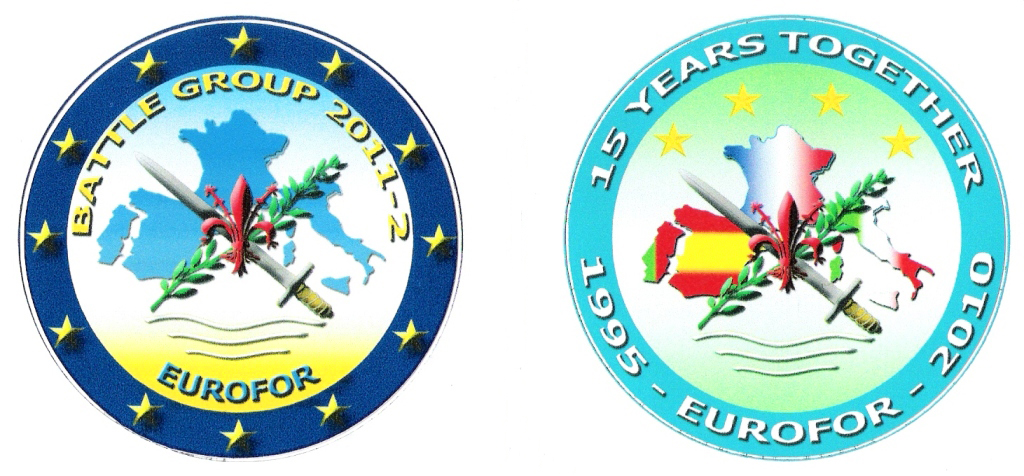
No passado dia 23 de Setembro de 2010, como oportunamente o Operacional noticiou, o Comando desta Força foi assumido por um oficial-general do Exército Português, o Major-General Martins Ferreira, que será o comandante deste Battle Group 2011-2 da EUROFOR. Aqui fica uma reportagem sobre a cerimónia em apreço, transmitida por um canal de televisão italiano.
